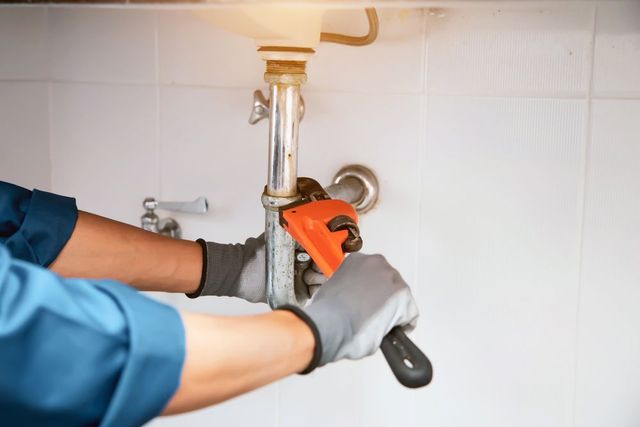Learning Bathroom Plumbing: Key Guidelines for First-Time Home Buyers
Click HereThey are making a few great points related to 11 Must-Read Tips for Plumbing a New House overall in this content below.

For brand-new house owners, understanding and maintaining shower room pipes can save both time and money by stopping expensive issues down the line. Right here are some essential restroom pipes tips to aid you maintain every little thing running smoothly.
Acquaint Yourself with the Main Shut-Off Valve
Recognizing where the major water shut-off valve is located in your home is critical. This permits you to rapidly shut off the water system in case of major leaks or during plumbing emergencies, avoiding extensive water damage.
Consistently Inspect for Leaks
Small leaks can cause big problems. Frequently inspect under sinks, around toilets, and near pipes components for any indicators of leakages. Search for moisture, tiny drips, or corrosion. Catching and repairing leakages early can protect against much more severe damage and conserve water.
Do Not Overlook Slow Drains Pipes
If your sink or bathtub is draining slowly, it's frequently an indicator of a blockage developing. Addressing this very early can stop a total blockage. Make use of a bettor or a plumbing professional's serpent to clean out particles. Prevent using chemical drainpipe cleansers as they can damage your pipes with time.
Know What Not to Flush
Bathrooms are not garbage disposals. Stay clear of flushing anything besides toilet paper and human waste. Things like wipes, feminine health products, and cotton bud must be gotten rid of in the trash to stop blockages and sewer back-ups.
Install Strainers in Drains
Area strainers in your sink and bath tub drains to capture hair and other particles before they enter your pipes system. Cleaning the filters on a regular basis will help protect against buildup and maintain water flowing easily.
Maintain Your Hot Water Heater
Ensure your hot water heater is readied to a suitable temperature level (usually about 120 levels Fahrenheit) to prevent scalding and lower energy use. Flush the tank yearly to get rid of debris build-up, which can decrease the performance and lifespan of your heating unit.
Update Your Components
If your home has older components, take into consideration upgrading to extra efficient designs. Modern commodes, showerheads, and faucets are designed to use much less water while giving good pressure, which can dramatically decrease your water expense and ecological impact.
Be Cautious with Do It Yourself Pipes Repair Works
While it's tempting to manage all home repair work by yourself, beware with pipes. Some issues may call for professional proficiency, specifically if they involve primary water lines or sewage system repairs. Working with a professional can often be extra affordable than do it yourself, particularly if it protects against more damage.
Plan For Cold Weather
Secure your pipes from freezing during cold weather by protecting pipes in unheated areas like cellars, attic rooms, and garages. Throughout extreme chilly, allow cold water drip from taps offered by subjected pipelines to assist stop cold.
Set Up Normal Upkeep
Take into consideration organizing annual assessments with a certified plumber. They can spot issues that you may miss out on, such as surprise leaks or wear and tear on pipes and components. Normal upkeep helps expand the life of your pipes system and can stop emergency situations.
Conclusion
Understanding and maintaining your home's bathroom plumbing can avoid numerous typical concerns. By following these important tips, you can ensure your restroom stays practical and efficient, saving you time and money over time.
Essential Plumbing Tips for Homeowners: Keep Your Pipes Flowing Smoothly
As a homeowner, understanding the basics of your plumbing system can save you time, money, and a lot of headaches. Plumbing issues can range from minor annoyances like dripping faucets to major problems like burst pipes that cause significant damage. This guide provides essential tips to help you maintain your plumbing system and tackle common issues.
Understanding Your Plumbing System
Supply System: Brings fresh water into your home from a municipal source or a well. Drain-Waste-Vent System: Removes wastewater and vents sewer gases outside. Fixtures and Appliances: Includes sinks, toilets, showers, dishwashers, and washing machines. Basic Maintenance Tips
Regular Inspections: Periodically check for leaks, corrosion, and other signs of wear and tear. Look under sinks, around toilets, and near water heaters. Know Your Main Shut-Off Valve: In case of a major leak, you’ll need to shut off the water quickly. Ensure everyone in your household knows where the main shut-off valve is located. Prevent Frozen Pipes: In cold climates, insulate exposed pipes and let faucets drip during extreme cold to prevent freezing. Use Strainers: Install strainers in sinks and tubs to catch hair, food particles, and other debris that can cause clogs. Common Plumbing Issues and Solutions
Clogged Drains:
Prevention: Avoid pouring grease down the drain and use drain screens to catch debris. DIY Fix: Use a plunger or a plumbing snake to clear minor clogs. For stubborn clogs, a mixture of baking soda and vinegar can sometimes help. Leaky Faucets:
Prevention: Replace washers and seals regularly. DIY Fix: Turn off the water supply, disassemble the faucet, and replace worn parts.

Here